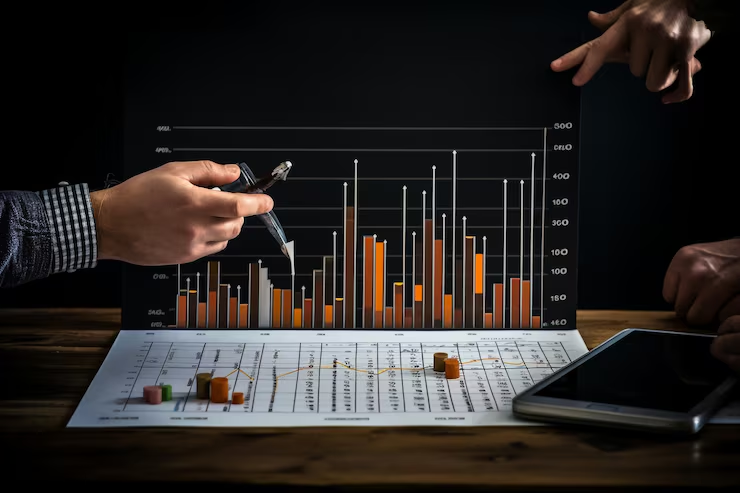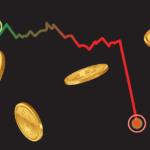Understanding the market is the first step when you trade stocks or indices. Technical Analysis This simplifies the process. This method is based on price and volume data. Traders use charts and indicators to identify trends. Every movement in the market has a pattern. Understanding the pattern gives you ideas for entry and exit.
Index markets require short-term and long-term trends. Technical Analysis: It gives you clear signals about timing and momentum. These skills improve with practice and observation. Studying market behavior is a great habit for trading.

Chart Patterns
Charts Technical Analysis They are a fundamental part of the market. They are a visual record of past price movements. It is important to identify support and resistance levels. Understanding them helps traders gauge direction. In index markets, these patterns give strong signals. Each pattern tells a story that predicts future movements. Technical Analysis Understanding charts in depth improves accuracy.
Trend lines
A trendline is a straight line that connects highs or lows. Technical Analysis: A basic tool of the market. If the line goes up, the market is bullish. If it goes down, it is bearish. Trend lines show the momentum in the index market. This indicates whether buyers or sellers are strong.
Each line adjusts over time. A breakout indicates the start of a new movement. There are several points to consider in drawing an accurate trend line. Continuous analysis gives you reliable trend signals. Technical Analysis These lines are very valuable.
Moving Average
A moving average shows a smoothed average of price data. Technical Analysis They are used to confirm the trend. Both simple moving averages and exponential moving averages are useful. The SMA indicates the long-term trend, while the EMA indicates the short-term momentum.
In index markets, these averages provide entry and exit signals. When the price is above the average, it is a bullish signal. When it is below it, it is a bearish signal. Crossovers indicate a change in trend. Technical Analysis Transitions are a simple indicator for average traders.
Indicator tools
Technical Analysis Several indicators are used that correct market behavior:
- Relative Quality Record (RSI)
- Moving Normal Joining Dissimilarity (MACD)
- Volume indicator
- Average Genuine Extend
These tools help with market entry and exit decisions. Using a combination of indicators is more reliable. Over-analysis should be avoided, as it confuses signals. A balanced approach is best for index markets.

Data interpretation
Show me the index. Technical Analysis Data is effective when deciphered accurately. Each chart and pointer tells a story, but it takes aptitude to get it. Recognizing the relationship between cost activity and volume is a crucial establishment. If cost is rising but volume is moo, it is a frail flag. In any case, if both cost and volume are rising, the slant is considered solid.
Passionate choices ought to be maintained at a strategic distance when analyzing information. Each pointer has its confinements, so utilizing a combination is more dependable. It is supportive for list dealers to ponder different time outlines. This affirms that long-term and short-term patterns are in the same heading. When you analyze reliably, both certainty and exactness make strides. Information Perusing Skills Technical Analysis Which is the spine.
Candle reading
Candlestick Pattern Technical Analysis This is the best way to get cost activity. Each candlestick appears to be the battle between buyers and dealers inside a period of time. A green candlestick shows a bullish drift, whereas a ruddy candlestick shows a bearish move. The estimate of the candlestick body and wick gives a thought of momentum.
A long candlestick and a little body show uncertainty. The Doji, Hammer, and Engulfing patterns are the most important for index traders. These patterns provide reversal signals. The context of each candlestick should be analyzed based on the market environment.
If the pattern forms near support or resistance, the signal is stronger. Candlestick reading is strengthened by regular practice and observation. Every successful trader uses technical analysis. I prefer candlestick skills. This technique helps in making quick decisions in short-term trading.
Market Psychology
Trading involves not only numbers but also human behavior. Technical Analysis This indirectly represents the psychology of the market. When the price rises sharply, both fear and greed are activated. Traders’ emotions create market patterns. People’s reactions can be gauged at support and resistance levels. When the crowd starts buying, the market is overbought, and when panic selling occurs, an oversold condition is created.
This behavior is widely repeated in the index market. A smart trader is one who relies on data, not emotions. Technical Analysis Market indicators like RSI and MACD also reflect sentiment. Decisions are more accurate when you understand both the mindset and the charts. The balance of market psychology and analysis is the secret to every trader’s success.

Timeframes
For every trader Technical Analysis Choosing the right timeframe is very important. Short-term traders look at minute charts, while long-term investors focus on weekly charts. In index markets, it is better to analyze the trend on multiple time frames. Tools like EMA and RSI give different signals on different time frames.
Beginners should start with daily charts to gain clarity. Intraday analysis is helpful after gaining experience. A multiple-time-frame study is useful for confirming the trend. Technical AnalysisThis habit helps you understand both the big picture of the market and when to enter. This method improves both trading consistency and confidence.
Backtesting method
A trading strategy is only reliable when it has been tested. Analysis Technical Analysis Backtesting is a scientific process. It means testing your strategy on past market data. If the plan consistently shows profits, you can use it live. In index markets, backtesting is easy to do with historical charts and indicators. This method prevents emotional trading and builds confidence. Every trader should know the accuracy rate of their system.
Backtesting helps you understand under what conditions a strategy fails. This process requires both patience and data analysis. When your system is tested, you are confident in future trading. Technical Analysis Backtesting is a sign of discipline and a professional approach. This practice brings both science and logic to trading.
Subtitle section
- RSI signal
RSI momentum highlights overbought or oversold conditions.
- MACD Crossover
Crossing the MACD line and the signal line indicates the direction of the trend.
- Bollinger
It shows price volatility and indicates the possibility of a breakout.
- Fibonacci levels
Retracement helps identify correction and support areas.
Support levels
A support level is a place where buyers become active in the market. Technical Analysis: This point indicates the bottom of the market. When the price is close to support, buying interest increases. If support is broken, a new low is possible. Index traders closely monitor this level. Identifying strong support areas is helpful for stability. Every successful trader uses support and resistance. Technical Analysis I explain the points in a logical way.
Resistance zones
A resistance level is an area where sellers become active. When the price reaches there, selling pressure increases. Technical Analysis It is important to identify resistance. This signals traders to take profits. In index markets, a strong rally begins when resistance is broken.
Future targets are predicted by drawing multiple resistance lines. Each resistance is a test where buyers and sellers compete. Technical Analysis This ensures that these zones are defined correctly and the decision is clear.
Indicator tools
Technical Analysis Indicators are tools that measure market movements and show the direction of the trend. These tools play a vital role in every trader’s decision-making process. Below are some of the most useful indicators that are most commonly used in the index market:

- Moving Average: Shows the normal of the cost and demonstrates the course of the trend.
- RSI (Relative Quality Index): Detects overbought and oversold levels.
- MACD: Speed and hybrid signals for section or exit points.
- Bollinger Bands: Highlights advertise instability and breakout zones.
- Volume indicator: Measuring buying and offering pressure.
- Fibonacci Retracement: Helps to discover resistance and back levels.
- ADX (Normal Directional Index): Measures the quality of the trend.
- Ichimoku Cloud: Identifies advertised opinion and future bolster resistance zones.
- Stochastic Oscillator: Identifies force and inversion signals.
- Pivot points: Defines exact bolster and resistance levels for day-by-day exchanging.
You are welcome. Technical Analysis Every trader should use these tools according to their strategy to make the best decisions.
Volumetric study
Volume Technical Analysis It is a confirmation tool. When price action is accompanied by high volume, the trend is strong. If there is low volume, the movement is weak. Volume in index markets indicates the interest of traders.
An increase in volume indicates that large players are active in the market. An increase in volume during a breakout provides confirmation of the trend. It is a good habit to check volume with every trade. Technical Analysis I make the mistake of neglecting the study of volume.
Market Signals
Identifying market signals is essential for trading. Technical Analysis It clearly highlights these signals. Buy and sell signals are obtained by combining indicators. Daily and weekly signals should be checked in index markets. Confidence increases when multiple tools show the same direction.
Time frames should be compared to avoid false signals. Market sentiment also affects the strength of signals. Technical Analysis: This gives the trader discipline and precision.
Risk control
Risk control is the most important part of trading. Technical Analysis It allows you to define stop-loss and target levels. Each trade should have limited risk. Index markets are highly volatile, so risk management should be a priority. Portfolio diversification is helpful.
Position sizing helps control losses. Every strategy should have an exit plan. Technical Analysis: Understanding the risk-reward ratio helps guide you. Consistent practice builds your confidence.
Strategic planning
Proper planning is essential for trading. Technical Analysis: This plan forms the basis. First define your goal, then select indicators. It is also important to decide on a timeframe. Swing and positional strategies are popular for index markets.
Recording and analyzing each trade improves learning. Backtesting gives you an idea of whether your plan is reliable or not. When your plan is tested, emotional trading is reduced. Technical Analysis Logical planning increases the chances of success.
Final Thought
Success in the index market comes only to those traders who use it correctly. Charts, indicators, and patterns all make up a system. Each piece of information provides a narrative that forecasts a course. Accuracy improves over time. Controlling risk and emotions is essential in every trade. When your focus is on learning, progress is guaranteed. Technical Analysis This allows you to take your trading to a professional level.


